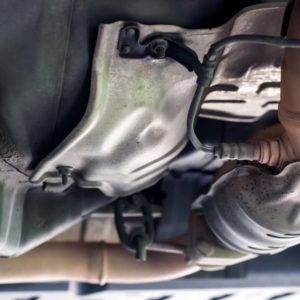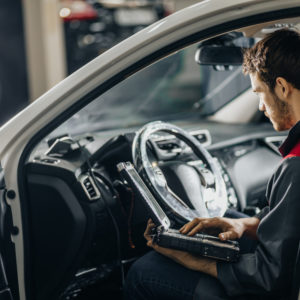Is your car’s check engine light on? Check your vehicle’s onboard diagnostic (OBD) system using a scan tool to check for stored trouble codes. If the scan tool shows the P2237 code, then this article will help you learn about its definition, common causes, and symptoms.
What Does the P2237 Code Mean?
The P2237 is defined as O2 Sensor Positive Current Control Circuit/Open Bank 1 Sensor 1. This code is stored when the powertrain control module (PCM) detects inconsistent signals from the oxygen sensor in engine bank one. Oxygen sensors are responsible for measuring the oxygen levels in the vehicle’s exhaust gases, as they determine whether the engine is running lean or rich. The PCM needs data from the oxygen sensors to determine the air-fuel ratio, among other important engine variables. As road conditions vary, engine variables need to change to maintain efficiency.

Note: The definition of the P2237 code can be different depending on the vehicle manufacturer. Consult the appropriate repair manual or repair database for the exact code definition.
What are the Common Causes of the P2237 Code?
These problems can trigger the P2237 code:
- Oxygen sensor failure
- Exhaust leak
- Wiring issue
- PCM failure

What are the Common Symptoms of the P2237 Code?
Issues that trigger the P2237 code can cause symptoms such as:
- Reduced fuel efficiency
- Poor engine performance
- Illuminated check engine light

How to Diagnose the P2237 Code
The P2237 code can be caused by several issues. Depending on the symptoms, you might need to inspect or test some components to rule them out as the culprit. This can be difficult because you might need special knowledge or training to properly access and assess these parts. The best course of action is to leave the task to a properly trained mechanic.
You can learn more about the diagnostic process by checking out the video below:
How to Fix the P2237 Code
Unfortunately, there isn’t a single cure-all that can resolve the problems that trigger this OBD-II code for any vehicle. The repair procedure will vary depending on the faulty component and the vehicle model. The best course of action is to ask a certified mechanic for a proper diagnosis. Once the problem has been accurately identified, then you can consult various auto repair resources and how-to guides available online for possible solutions. Your vehicle owner’s manual can also help, as it might have troubleshooting guides. If you aren’t confident about your automotive repair skills, it’s best to consult a mechanic.
Any information provided on this Website is for informational purposes only and is not intended to replace consultation with a professional mechanic. The accuracy and timeliness of the information may change from the time of publication.


















